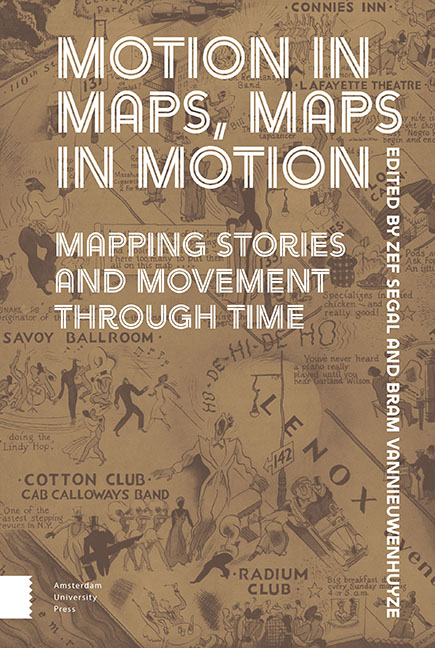Book contents
- Frontmatter
- Contents
- List of Figures
- List of Diagrams
- Introduction
- 1 The New World Map and the Old; The Moving Narrative of Joan Blaeu’s Nova Totius Terrarum Orbis Tabula (1648)
- 2 Entangled Maps; Topography and Narratives in Early Modern Story Maps*
- 3 Flow Mapping through the Times; The Transition from Harness to Nazi Propaganda
- 4 The Tensions of Heterochronicity on Cartographies of Imperial Motion in Japan
- 5 A School Atlas as a History Machine: The Bosatlas Online
- 6 Facebook Cartographies and the Mapping of Local History; Storied Maps from the American Middletown
- 7 ‘Change-of-State’ in the History of Cartography
5 - A School Atlas as a History Machine: The Bosatlas Online
Published online by Cambridge University Press: 20 November 2020
- Frontmatter
- Contents
- List of Figures
- List of Diagrams
- Introduction
- 1 The New World Map and the Old; The Moving Narrative of Joan Blaeu’s Nova Totius Terrarum Orbis Tabula (1648)
- 2 Entangled Maps; Topography and Narratives in Early Modern Story Maps*
- 3 Flow Mapping through the Times; The Transition from Harness to Nazi Propaganda
- 4 The Tensions of Heterochronicity on Cartographies of Imperial Motion in Japan
- 5 A School Atlas as a History Machine: The Bosatlas Online
- 6 Facebook Cartographies and the Mapping of Local History; Storied Maps from the American Middletown
- 7 ‘Change-of-State’ in the History of Cartography
Summary
Abstract
In principle, a school atlas presents the status quo at a given moment, but when it is regarded as a serial work regularly updated, and when, thanks to digital technologies, the same maps in consecutive atlas editions can be compared one to another, then movement over time is visualized. With a customized tool, one may pick one particular map in the nth edition of the atlas and then compare it to the same map in the previous or the next edition on a shared screen, to find out what changes occurred within a specific time frame. Examples of possible applications at different scales show that each map type (because of the kind of symbols used) and each scale level have their own types of stories unfolding.
Keywords: Atlases; Bosatlas; geography; history; functionality; usability
Introduction
In principle, a school atlas presents a status quo at a given moment, although by doing so it links thousands of stories: countries that achieved their independence, railways completed against all odds, or river valleys whose population was displaced in order to allow for the construction of reservoirs. Sometimes, it may contain references to single events, like a flood or a wildfire that happened at a specific point in time, but as they detract from the main purpose of a school atlas, i.e. to show long-term developments and durable situations, such remarks on the map are short-lived, and seldom survive the next edition. The map detail in Figure 32, taken from the 1921 edition of the Bosatlas, a famous school atlas edited and used in the Netherlands, offers a comment on the collapse of a river dyke following the flooding of the Meuse River in January 1920 (Doorbraak Jan. 1920). This event caused the town of Kuik (Cuyk) to be inundated. This comment was dropped again in the next edition.
When a school atlas is regarded as a serial work that is annually or biannually updated, and when, thanks to digital technologies, the same maps in consecutive atlas editions can be compared one to another, then we are mapping movement through the times.
- Type
- Chapter
- Information
- Motion in Maps, Maps in MotionMapping Stories and Movement through Time, pp. 129 - 152Publisher: Amsterdam University PressPrint publication year: 2020

